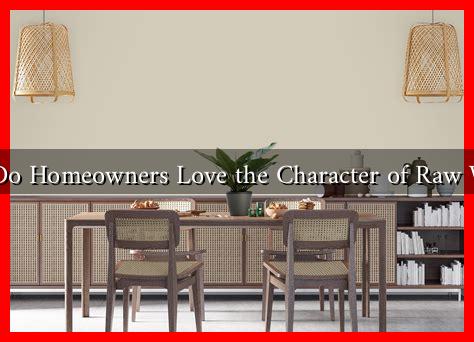-
Table of Contents
Why Do Homeowners Love the Character of Raw Wood?
In recent years, the trend of incorporating raw wood into home design has gained significant traction. Homeowners are increasingly drawn to the unique character and warmth that raw wood brings to their living spaces. This article explores the reasons behind this growing love for raw wood, examining its aesthetic appeal, sustainability, and versatility.
The Aesthetic Appeal of Raw Wood
One of the primary reasons homeowners are enamored with raw wood is its natural beauty. Unlike manufactured materials, raw wood showcases unique grains, knots, and textures that tell a story of their own. This organic quality adds depth and character to any space.
- Unique Patterns: Each piece of wood is distinct, offering a one-of-a-kind look that cannot be replicated. Homeowners appreciate the individuality that raw wood brings to their interiors.
- Warmth and Comfort: The natural tones of wood create a warm and inviting atmosphere, making spaces feel more comfortable and homely.
- Timelessness: Raw wood has a classic appeal that transcends trends, ensuring that it remains stylish for years to come.
Sustainability and Eco-Friendliness
As environmental concerns continue to rise, many homeowners are seeking sustainable building materials. Raw wood is often viewed as a more eco-friendly option compared to synthetic materials. Here are some reasons why:
- Renewable Resource: Wood is a renewable resource, especially when sourced from sustainably managed forests. This makes it a more environmentally friendly choice.
- Carbon Sequestration: Trees absorb carbon dioxide as they grow, making wood products a carbon sink that helps mitigate climate change.
- Biodegradable: Unlike plastic or metal, wood is biodegradable, reducing waste in landfills.
According to the Forest Stewardship Council (FSC), sustainably sourced wood can significantly reduce the environmental impact of construction and renovation projects. Homeowners who prioritize sustainability often find raw wood to be an appealing choice.
Versatility in Design
Raw wood is incredibly versatile, making it suitable for various design styles, from rustic to modern. Homeowners can use raw wood in numerous ways, including:
- Furniture: Raw wood tables, chairs, and shelves can serve as statement pieces in any room.
- Flooring: Wood flooring adds warmth and character, enhancing the overall aesthetic of a home.
- Accent Walls: A raw wood accent wall can create a focal point in a living room or bedroom, adding texture and interest.
For example, a recent case study by the National Association of Home Builders (NAHB) found that homes featuring raw wood elements sold for an average of 10% more than those without. This statistic highlights the growing demand for raw wood in home design.
Emotional Connection and Nostalgia
Beyond aesthetics and sustainability, raw wood often evokes emotional connections and nostalgia. Many homeowners associate wood with childhood memories, such as family gatherings around a wooden dining table or playing in a treehouse. This emotional resonance can make a house feel more like a home.
Furthermore, raw wood can create a sense of authenticity and craftsmanship that resonates with homeowners. In an age of mass production, the artisanal quality of raw wood appeals to those who value handmade and unique items.
Conclusion
In conclusion, the love for raw wood among homeowners can be attributed to its aesthetic appeal, sustainability, versatility, and emotional connection. As more people seek to create warm, inviting spaces that reflect their values and individuality, raw wood continues to be a favored choice in home design. Whether through furniture, flooring, or decorative accents, raw wood adds character and charm that resonates with homeowners on multiple levels.
For those interested in exploring the beauty of raw wood in their own homes, consider visiting [The Wood Database](https://www.wood-database.com) for more information on different wood types and their applications. Embracing raw wood not only enhances the beauty of a home but also contributes to a more sustainable future.


